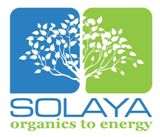 The renewable energy segment commonly referred to as Waste-to-Energy or Organics-to-Energy (O2E) promises a compelling combination of benefits to investors and to society. Diversion of Organic Waste Technologies such as Anaerobic Digestion, Pyrolysis and Composting offer society the opportunity to create a variety of products beneficial to communities. These products include fertilizers, biochar, and renewable forms of energy. But it doesn't end there. By diverting organic wastes such as pre- and post-consumer food, wastewater biosolids and agricultural or other green wastes away from landfills we reduce costs to the taxpayer while generating income from the diversion of waste through multiple revenue streams. Production of Renewable Energy Processing organic waste through Anaerobic Digestion, Pyrolysis and other Organics-to-Energy (O2E) technologies results in two primary forms of renewable energy. Producers and the consumers who support them either generate electricity or biologically derived Biomethane, used as is or further processed into Compressed Natural Gas (BioCNG). Investors take note: As the US exports more of its own extracted Natural Gas overseas, domestic prices are likely to increase making the need for BioCNG (think large commercial fleets) or BioMethane (used just like natural gas) an even smarter investment. Improved Food Supply Chain When we discuss the issues facing our food supply we are really discussing a multiplicity of issues.
Making use of O2E technologies can reduce or eliminate several of these factors when deployed using lucrative business models. Nutrients are better managed due to the processing of raw manures and other waste streams into more readily available, therefore manageable forms. By its very nature, producing fertilizers using O2E technologies empowers regional entrepreneurs to produce revenue on a local scale facility to facility in a replicable and relatively inexpensive footprint. Based on Solid Science All technology platforms mentioned in this article are based on solid science and simple, elegant engineering. As an example, the precursor technology to our most current form of anaerobic digestion was a result of solutions developed during WWII by American engineers i.e. the tech has been proven and in use around the world for over seven decades. Preferable ROI Timeframe While factors including technology, facility footprint, business model, regional marketplace, etc. effect the return on investment expectations for an O2E project, the independently owned and operated facility, particularly one dependent on a diversified set of revenue streams can show a sizable return within a 5-10 year period without grants or subsidies. Even at longer timeframes O2E presents a favorable investment when placed against other beneficial forms of renewable energy such as solar or wind. Why Should I consider being a part of O2E? Why should the investor appreciate small-scale, replicable facilities of the kind suggested here? In addition to the reasons stated above consider:
 Scott Graves and SMGraves Associates is responsible for the business model behind the Solaya O2E Advantage. Tune in to his podcast series 'No Boundaries Radio' on the No Boundaries Radio Network. Meet him at the crossroads between strategy and innovation at scott@smgravesassociates.com or twitter @smgcreative.
1 Comment
|
Scott M. GravesScott Graves and SMGraves Associates is responsible for the business model behind the Solaya O2E Advantage. Tune in to his podcast series 'No Boundaries Radio' on the No Boundaries Radio Network. Meet him at the crossroads between strategy and innovation at scott@smgravesassociates.com or twitter @smgcreative. ArchivesInvestor Relations
|
Solaya Energy LLC, Copyright © 2022

 RSS Feed
RSS Feed
